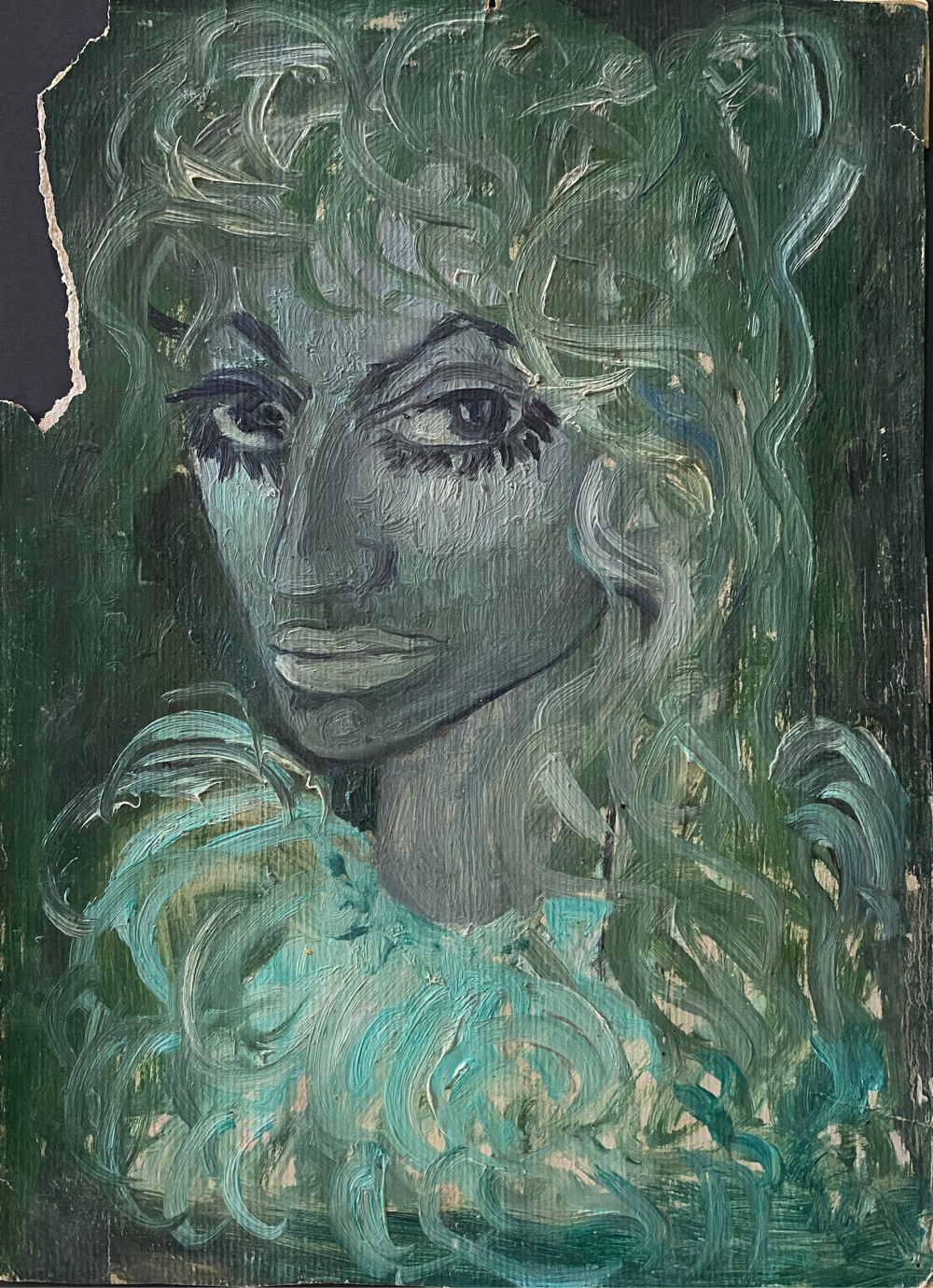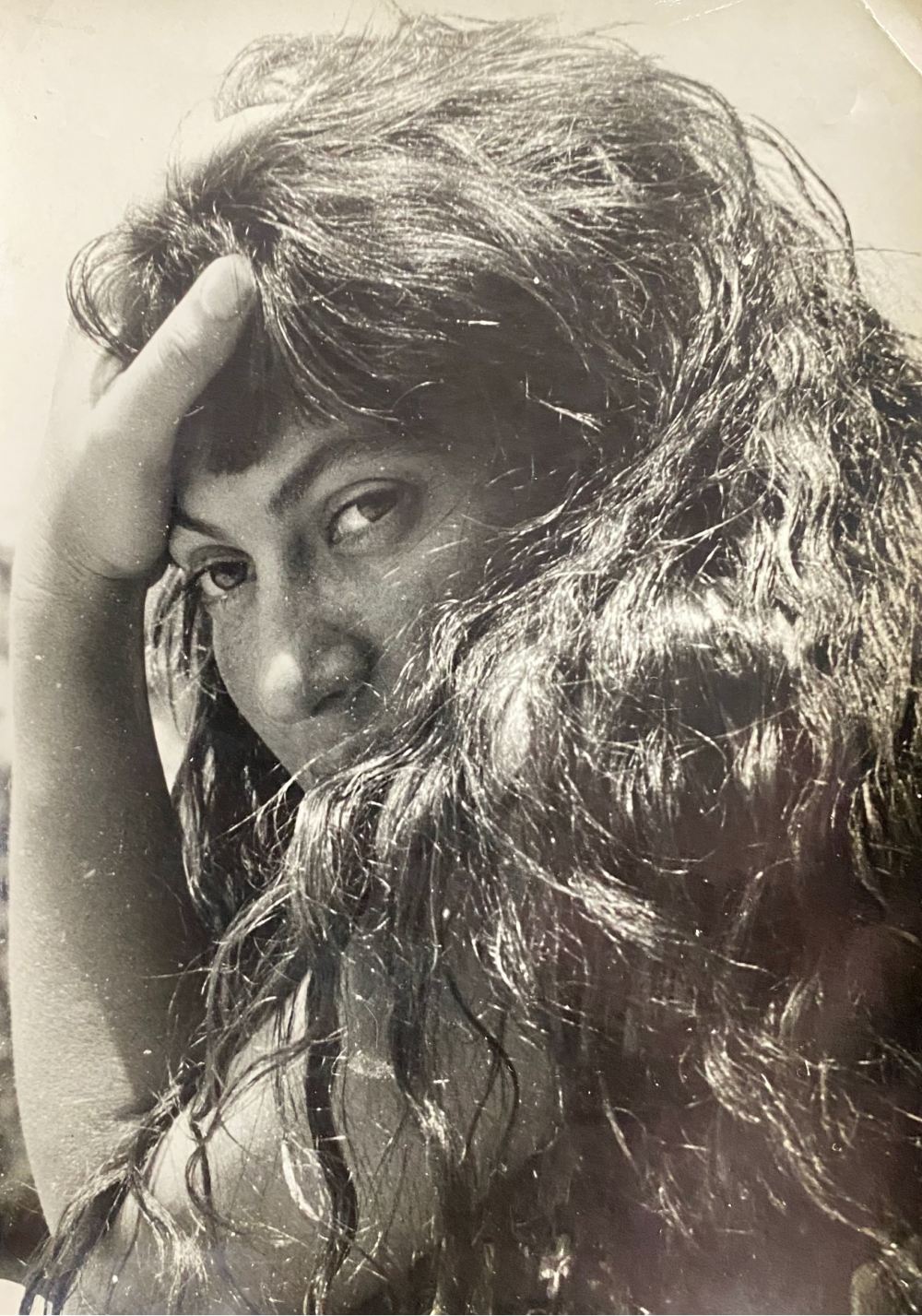→ ESTATE
Lumturi Blloshmi
(1944 – 2020)
Tirana, Albania
_1968_Oil%20on%20Paper_38.5x27.jpg)
THE ESTATE

Lumturi Blloshmi (1944–2020), affectionately known as Lume, is now recognized as one of Albania's most important artists. However, her journey was an odyssey of personal hardship and defiance against a repressive regime. Losing her hearing at a young age was merely the opening act in a life marked by resilience.
Born into an ostracized noble family targeted by the communist regime, Lume’s persecution began with the execution of her father when she was just two months old. Her artistic ambitions were initially crushed when she was denied entry to art school but with the insistence of her mother she succeeded in attending nevertheless. Even after graduating, the government relegated her to a monotonous job as an offset printing worker.
Lack of studio space further constrained her artistic expression. A powerful 1986 letter to a high-ranking official reveals her struggles: cramped in a two-room apartment with extended family, Lume desperately craved a dedicated space to create. Fortunately, her plea resulted in a one-bedroom apartment that doubled as her cherished atelier, where she produced a significant portion of her artwork.
Lume dedicated her life fully to her art, famously declaring ‘I married my art!’ She remained unmarried and childless, prioritising her creative pursuits. In her later years, she acquired another one-bedroom apartment that served as her studio until her death. Recognising the importance of her legacy, she entrusted her artistic estate to her nephew, fellow art graduate Ervin Blloshmi. Curator Adela Demetja, who collaborated closely with Lume from 2016 onwards, continues to champion Blloshmi's work through exhibitions and research, ensuring her art and story inspire future generations.
Her participation in the 59th Venice Biennale in 2022, curated by Adela Demetja, marked a significant posthumous recognition of her contributions to contemporary art. Despite the numerous obstacles she faced, Lume remained a resilient and nonconformist artist, deeply connected to the rich tapestry of Balkan traditions and the socio-political shifts in Albania. Her legacy is cemented in the annals of Albanian art history, celebrated for her intellectual clarity, creative vigour and the transformative impact of her work.
THE ARTIST

Lumturi Blloshmi, known as Lume (1944–2020), embodied the resilient spirit of an artist who thrived despite adversity. Born and raised in Tirana, Albania, her life was fraught with challenges. Her family opposed the ruling Communist Party's ideology, leading to significant hardships from an early age. At just two months old, her father, a high-ranking official under King Zog I, was executed without a trial by the communist regime. At age five, meningitis robbed her of her hearing.
Amid these challenges, art became a source of solace and expression for Lume. In primary school, eager to impress her classmates, she secretly presented one of her brother's brilliant drawings as her own. When questioned by the teacher, she felt the pressure to prove her talent for the first time. This moment, as she describes it, was when she first caught the ‘bug’ of the visual arts.
Lume honed her skills at the prestigious Jordan Misja Artistic High School (from 1959–1963) and graduated with a degree in painting from the Academy of Arts in Tirana (1968). Despite her education, the government assigned Lume a mundane job as an offset printing worker after graduation.
Lume joined the Union of Writers and Artists in 1973, but political turmoil during Albania's ‘Cultural Revolution’ led to a revoked membership from 1974 to 1983, effectively silencing her artistic voice for nearly a decade. In 1984, Lume was reinstated but was also subjected to a government relocation program. Forced to trade city life for the mountains, Lume spent a year in the Albanian Alps. This twist of fate became a defining moment in her artistic journey. Immersed in the mountain landscapes, Lume refined her painting skills. She developed a mastery of colour, transforming it into a captivating language and building magnificent organic textures. This newfound ability set her work apart from her contemporaries.
Lume worked as an editor and illustrator at a textbook publishing house until 1989, followed by positions at various institutions like the National Art Gallery and the Institute of Culture Monuments in Tirana, lasting until 2004. Her dedication to the arts was recognised by the Albanian government in 2004, awarding her a special life pension for creative artists.
Like many artists of her generation, Lumturi Blloshmi adhered to the constraints of socialist realism until the late 1980s. The 1990s marked a turning point as Lume emerged as a leading contemporary artist. Moving beyond socialist realism, she embraced diverse media such as installation, photography, and performance. Her works, often infused with irony and resilience, reflected the realities of her life and times. Her dynamic and self-aware personality, nourished by philosophy, poetry, sensibility and spirituality shaped a distinctive body of work. Her art was exhibited in various group and solo exhibitions, including those at the Chelsea Art Museum in New York, the Municipal Art Gallery in Bydgoszcz, Poland, the Alexandria Biennale for Mediterranean Countries in Egypt, the National Art Gallery of Albania, and the National Art Gallery of Kosovo.
Lume rejected the label ‘female artist’; in Albanian society, where such terms often carried a negative undercurrent, she preferred simply to be known as an artist. Often the sole woman exhibiting among a male-dominated art scene, Lume's work and character drew comparisons to artistic giants like Frida Kahlo and Louise Bourgeois.
A cornerstone in Lume's life was her mother, who instilled in her strength, independence and a love for art, literature, music and philosophy. Lume's deafness did not hinder her; she taught herself French and excelled at dancing. Even without the ability to hear, she refused to learn sign language and trained herself to read lips at a young age.
Lume's art wasn't merely a creation; it was her lived reality laid bare. Raw, violent and undeniably beautiful, her work pulsated with symbolism – a tool she honed in a youth shaped by a world of idealised falsehoods. Concept reigned supreme in her creations. A deep reader of philosophy and literature, particularly Kierkegaard and Jung, Lume consistently surprised with both her brushstrokes and performances. Her life fuelled her art, and her art became her essence.
Lumturi Blloshmi passed away on 27 November 2020, due to a COVID-19 infection. She made history as the first woman artist to represent Albania at the Venice Biennale in its 59th edition in 2022, curated by Adela Demetja. This exhibition, titled Lumturi Blloshmi: From Scratch, aimed to research, examine, present and reposition her work and life within the national and international art history. The presentation included a selection of her works from the 1960s until the 2010s, spanning self-portraits and compositions in painting and photography that reflected her aesthetic essence and personal reality, as well as the specific political and social context in which they were created.